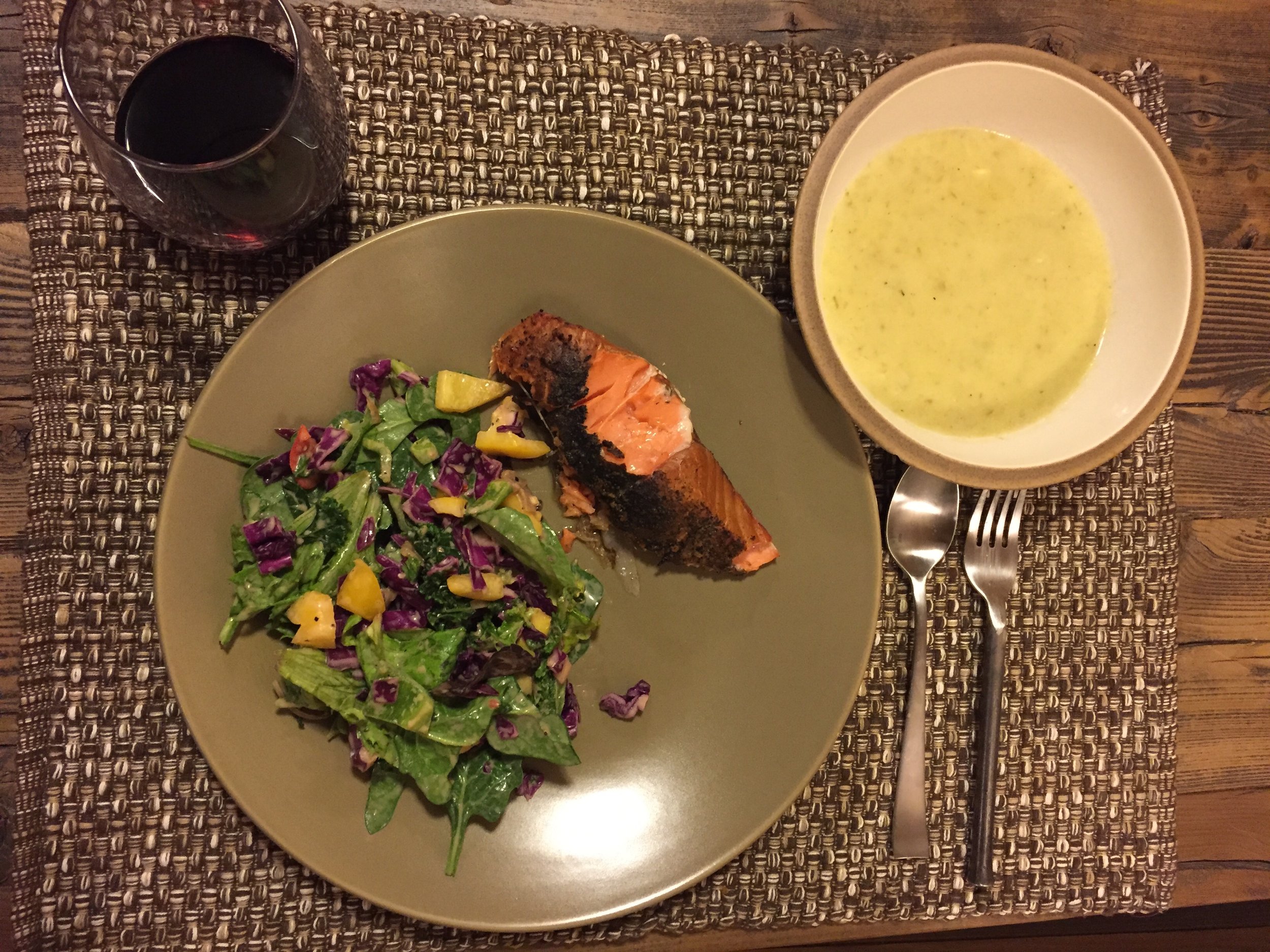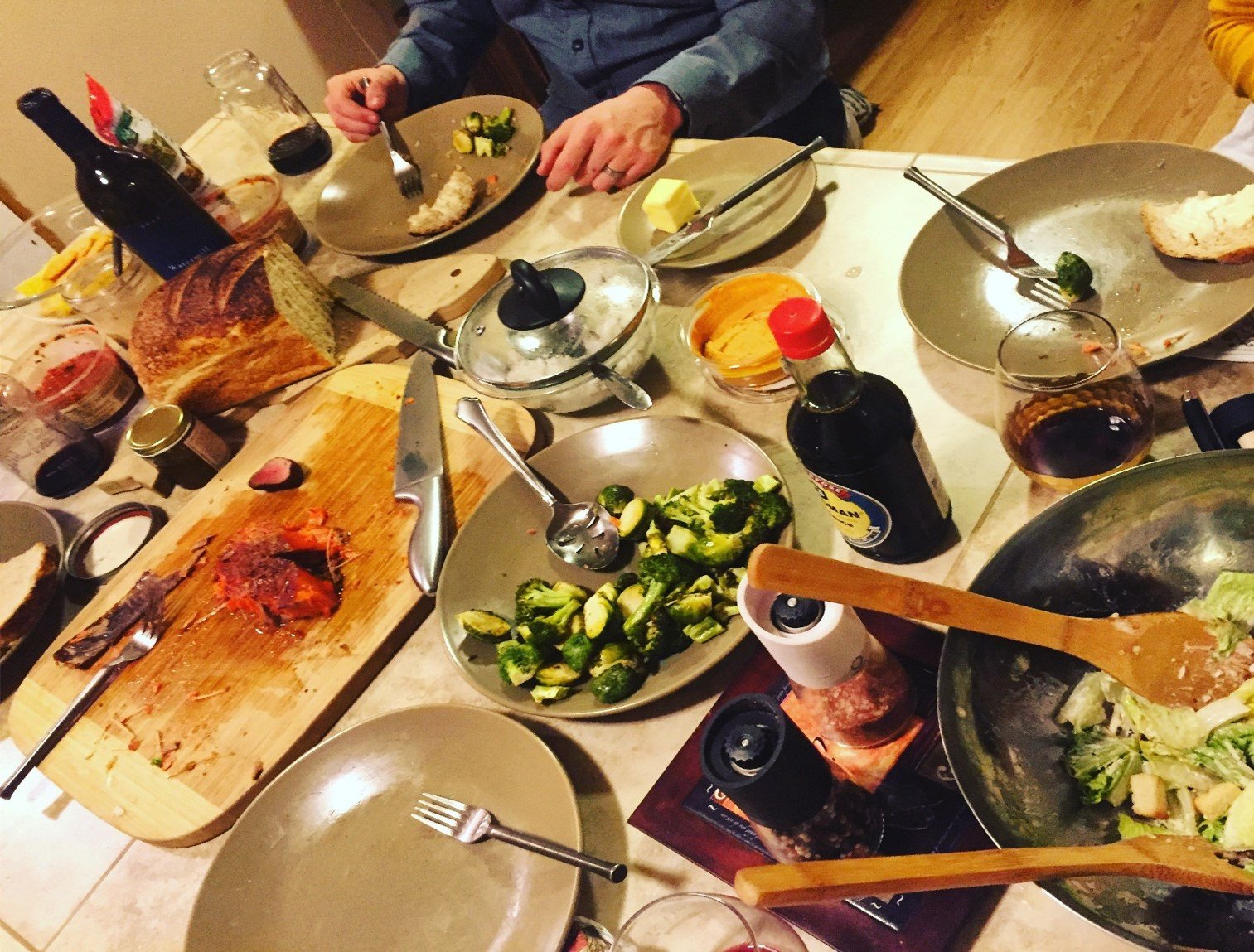Meal Planning 101
Why Meal Plan?
- Better variety
- Better health
- Better budgeting
- Less guess
- Less stress
- Less mess
The more you are able to make thoughtful food choices, not driven by blind hunger or a tired brain, the better chance there is for healthful, balanced meals, less eating out and less food waste; all of which is cheaper in the long run.
It is also easier to share the burden of “what's for dinner” with family or roommates, and possibly the tasks of food purchase and prep as well!
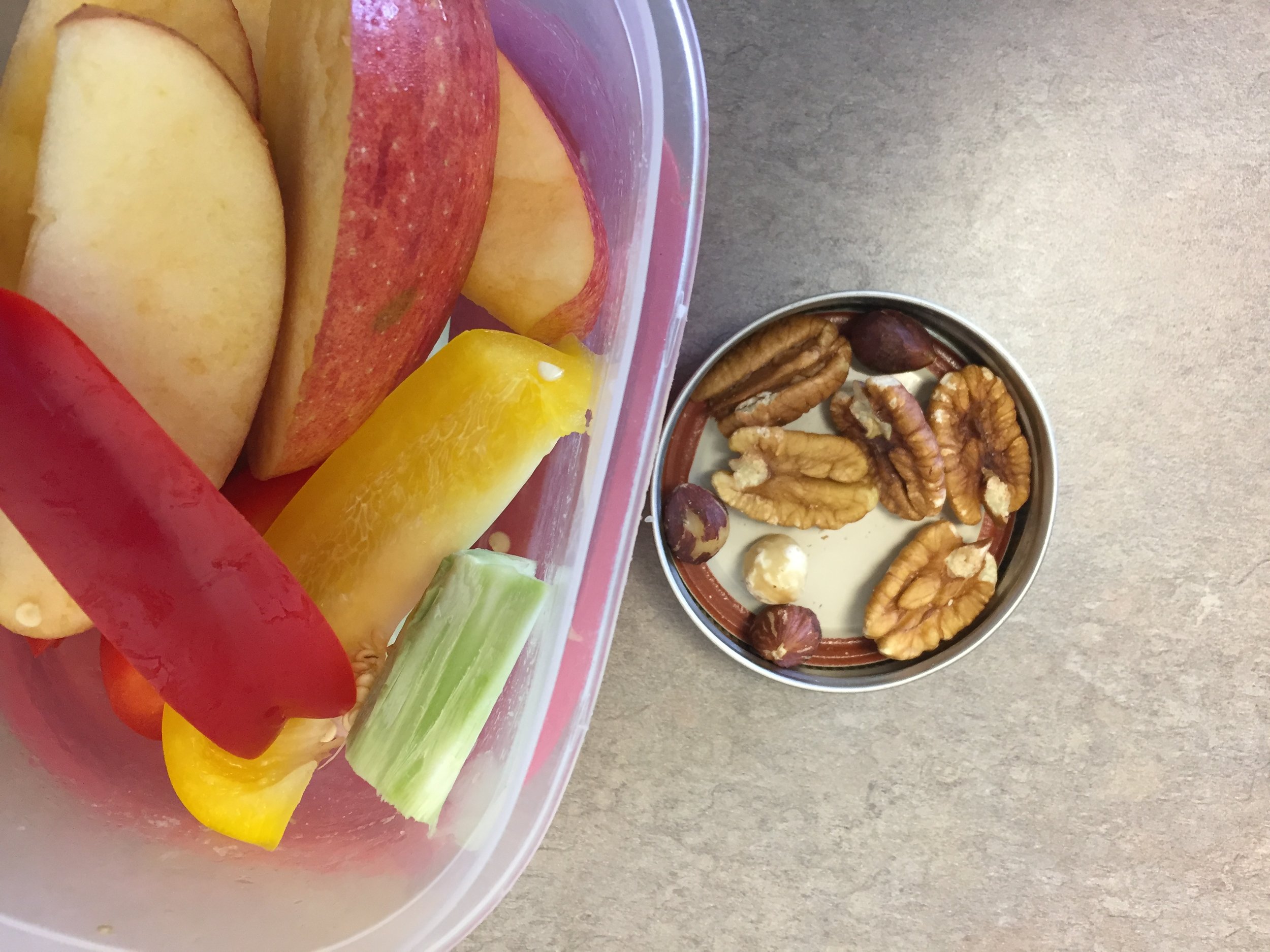

The outline:
- Take Inventory
- Plan Meals
- Plan Preparation
- Make a Shopping List
- Post Plan
- Execute
INVENTORY
What food is already on hand, in stock and ready for use? Knowing this will help eliminate food waste and save you money, as well as possibly less trips to the grocery store!
Write down what is in the fridge, freezer, pantry (and other places you make keep food?). There is no need to include all condiments, spices, baking goods, etc., unless you know you are low or need something for a recipe you don’t have on hand.
Example inventory list (we will refer back to this in a bit!):
- Pantry= peanut butter, almonds, oatmeal, rice, creamy tomato soup, onion, sweet potatoes, canned chili
- Refrigerator= milk ,eggs, shredded cheese, corn tortillas, carrots, bananas, pickles, leftover stir-fry
- Freezer= mixed veggies, whole chicken, tilapia, blueberries
Plus, we will assume we have basic kitchen stables, such as flour, baking powder, red wine vinegar, olive oil, canola oil, salt and ground pepper and a variety of other spices, herbs, and condiments including mustard, salad dressing, and hot sauce.
Inventory additional option (highly recommended)= categorize foods in your inventory by the nutrients they provide.
This will come into play when planning your meals to help ensure they are balanced. Why do we care if they are balanced? We need nutrients from a variety of foods/food groups, as each supplies different nutrients for body function.
For ease of meal planning, I divide foods into three categories: Veggies & Fruits, Proteins & Fats and Grains & Starches. The goal is to include something from each of these categories into each meal.
Example food inventory matrix with categories for balance meals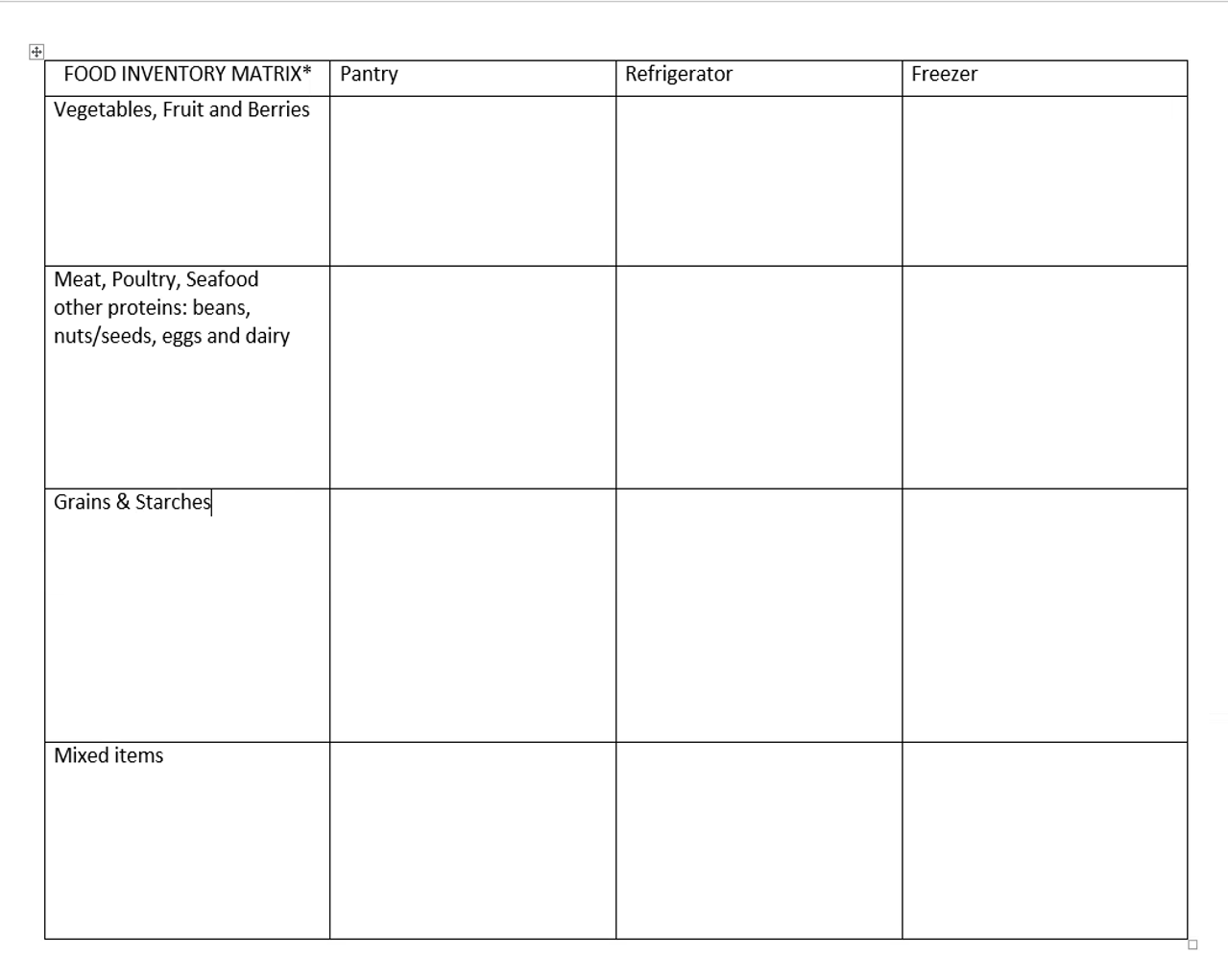 Our example from above:
Our example from above:
Veggies & Fruits=
- Bananas
- Carrots
- Pickles
- Blueberries
- Onion
- Frozen mixed veggies
Starchy veggies include potatoes/sweet potatoes, squash, peas and corn. We will group these with grains, as both contain similar macronutrient profiles.

Nutrients provided in this cateogry= vitamins C, A, and K, a plethora of minerals such as iron, calcium, magnesium, and potassium, plus fiber.
Protein & Fats=
(Meats, poultry, seafood, beans, legumes, nuts and seeds, eggs and dairy)
- Peanut butter
- Almonds
- Milk
- Eggs
- Shredded cheese
- Whole chicken
- Tilapia
Note: If we had canned beans instead of canned chili we would include it here, or with the starches. But chili is a mixed, pre-made dish.
Nutrients provided in this category= vitamins E, D and A, plus all of the B vitamins, omega-3 oils, selenium, chromium, zinc, phosphorus, heme iron, choline, and calcium.
Grains & Starches=
- Oatmeal
- Rice
- Sweet Potatoes
- Corn tortillas
Note: we could count beans and legumes here, or with protein and fats, depending on the meal.


Nutrients provided in this category= fortification with B vitamins, vitamins C, A and K, selenium, magnesium, potassium, iron and fiber.
Mixed Items=
(Pre-made and leftovers)
- Canned chili
- Creamy tomato soup
- Leftover stir-fry
PLAN MEALS
Questions to ask in the process
- How many meals to plan?
- Who are you planning for?
- What does the coming weeks schedule look like?
Are you wanting to plan just dinner, or would lunches, breakfasts and or snacks be helpful as well?
What social events, sporting events, or work obligations are in store in the coming days for you, and other eating with you, that you need to consider? What other food preferences might need to be considered?
Include anyone you are feeding in the planning process!
Write it out
Balanced meal= 1 protein & fat + 1 or more veggies or fruit + 1 optional grain or starch
First In First Out Rule= Start with food from your inventory and prioritize leftovers or foods that may spoil. I suggest only planning 1-4 days in advance to ensure follow-up through and avoid food waste.
Be as specific with ingredients as you need to be, as well as recipes you might want to use.
Example 3 day meal plan using above inventory matrix

As mentioned earlier, when preparing at home there is the opportunity for more foods that are from “scratch” not packaged or highly processed. This means healthier meals, more variety, less food waste and in some cases cheaper, especially when bought in bulk.
Write in the use of whole food ingredients as often as you can in place of pre-made. The health benefits are worth it!
PLAN REPARATION
Who will do what when?!
Example, continued

I crammed several preparation examples into this table for reference, not reality per say. For instance, it is not likely that after a night out for a birthday dinner you will go home and meal plan AND go to the grocery store, however I wanted to emphasize that these should be included somewhere in a good meal plan. Chances are that Monday through Wednesday plan, prep and grocery store trip are happening on Sunday, which is not shown here.
It is important to name who is in charge, not just say what needs to get done. Consider also writing in things such as “Basketball game at 5pm, dinner is leftover, on own”.
Consider batch cooking! When can you, make extra and pre-portion it out so it is ready to grab and go when needed. Consider freezing pre-portioned meals also, for in the future when you may find yourself in a pinch.
SHOPPING LIST
Underline food items you do not have in your inventory, this is your shopping list
Example, continued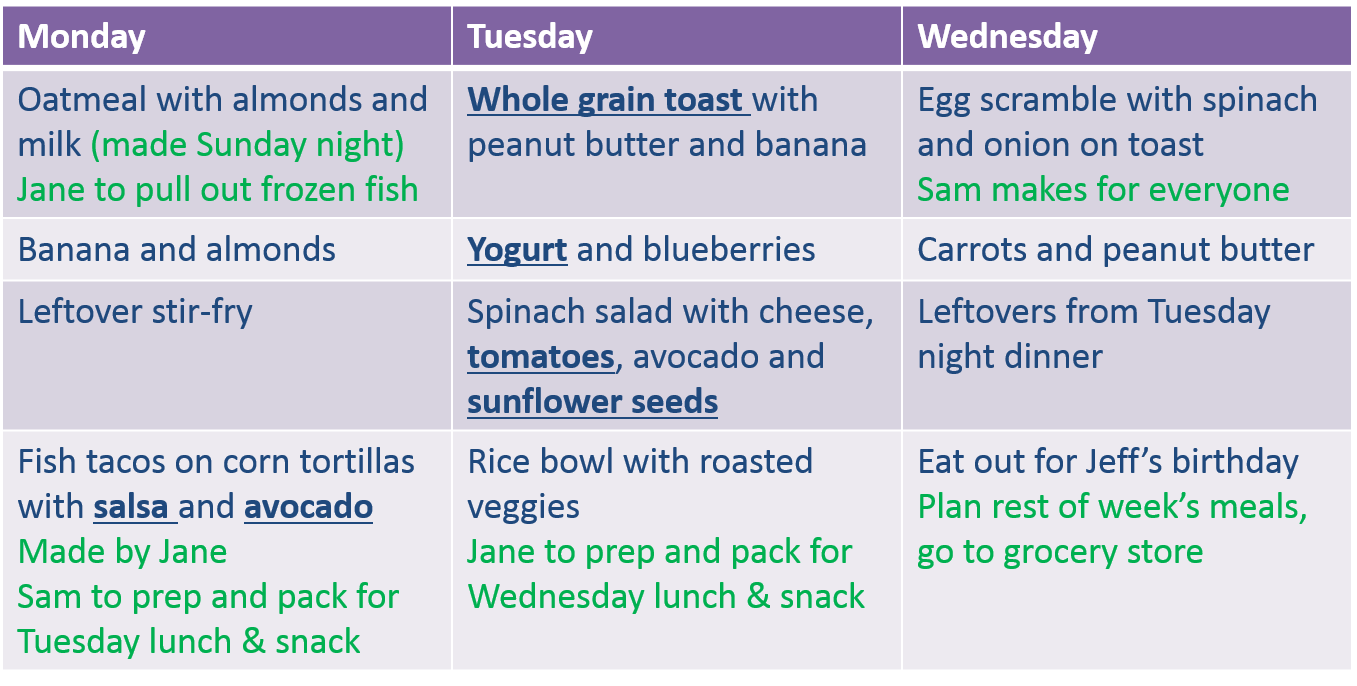
To ensure purchase of non-food items you might need at the store, a good trick is to hang a piece of paper on the fridge that is always there and make a list of things you needs as you see they are low or you run out, such as paper towels or aluminum foil, sandwich bags, etc. Or even spices or condiments that you do not purchase very often. Then you can add these to your food list at this stage in the planning process.

Write your shopping list out on a fresh scrap of paper, or into your phone, so you can bring it with you to the grocery store. I like to write out my shopping list by section, so I can check the items off in my head easier, meaning all produce together (side of store), all dairy, meat and eggs (back of store), bread (side or middle), packaged and canned (middle), bulk (side of store), etc.
When you go to do your food purchasing, bring your shopping list with you and ONLY GET THOSE ITEMS.
Another good tip is to not go food shopping hungry.
POST YOUR PLAN… for all to see!
This will help keep you, and others involved, accountable to the plan. Plus, less chance of others asking “what's for dinner??”
The easies place to post is on the fridge, but I have seen creative and successful white boards, blackboards and calendars used, usually hung in the kitchen for easy access.
And then… MAKE IT HAPPEN!
Execute the plan.
The toughest part about this whole process, I feel, is when it is over… because that is when you have to do it again.
It is easy to get motivated right now to make a big production of meal planning and make healthy changes in the coming week, but the magic happens upon consistency of this practice. And that is exactly what it takes, practice.
Don’t expect to get it right the first time, or even the fifth or tenth time, but keep trying and eventually you will find what works for you and those you eat with, and it will stick. In the meantime give yourself patience and know this is a process
That said, don’t worry if you don’t do each of these steps every time either, you can pick and choose which to work on as you see fit for you unique situation. At the very least, start the conversation.
As long as you see it as a worthy cause, it will be ☺

Resources to help you in this meal planning journey:
- Google Images: Meal Planning Printable
- Food & Nutrition Magazine online, recipes
- Apps: Spoonacular, Yumprint, 222 million tons
